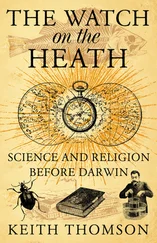Vikernes, Varg - Varg Vikernes - Sorcery and Religion in Ancient Scandinavia
Здесь есть возможность читать онлайн «Vikernes, Varg - Varg Vikernes - Sorcery and Religion in Ancient Scandinavia» весь текст электронной книги совершенно бесплатно (целиком полную версию без сокращений). В некоторых случаях можно слушать аудио, скачать через торрент в формате fb2 и присутствует краткое содержание. Жанр: Старинная литература, на английском языке. Описание произведения, (предисловие) а так же отзывы посетителей доступны на портале библиотеки ЛибКат.
- Название:Varg Vikernes - Sorcery and Religion in Ancient Scandinavia
- Автор:
- Жанр:
- Год:неизвестен
- ISBN:нет данных
- Рейтинг книги:3 / 5. Голосов: 1
-
Избранное:Добавить в избранное
- Отзывы:
-
Ваша оценка:
- 60
- 1
- 2
- 3
- 4
- 5
Varg Vikernes - Sorcery and Religion in Ancient Scandinavia: краткое содержание, описание и аннотация
Предлагаем к чтению аннотацию, описание, краткое содержание или предисловие (зависит от того, что написал сам автор книги «Varg Vikernes - Sorcery and Religion in Ancient Scandinavia»). Если вы не нашли необходимую информацию о книге — напишите в комментариях, мы постараемся отыскать её.
Varg Vikernes - Sorcery and Religion in Ancient Scandinavia — читать онлайн бесплатно полную книгу (весь текст) целиком
Ниже представлен текст книги, разбитый по страницам. Система сохранения места последней прочитанной страницы, позволяет с удобством читать онлайн бесплатно книгу «Varg Vikernes - Sorcery and Religion in Ancient Scandinavia», без необходимости каждый раз заново искать на чём Вы остановились. Поставьте закладку, и сможете в любой момент перейти на страницу, на которой закончили чтение.
Интервал:
Закладка:
From history we know this custom only vaguely, from the witch trials where they credited this limp to being a result of the devil's one horse or goat foot. There was no devil, of course; only a sorcerer with a limp. We also know it from Ancient Greece; one of the Greek tribes there used to walk into battle wearing only one shoe, and this terrified their enemies. Of course it did; their enemies thought they were facing an army of sorcerers! They had even at the time when this was recorded, some time in Antiquity, forgotten exactly why these men had done this, though. Greece had been a religious country for a long time already, and the old traditions were often forgotten even then.
The prince was not fooled by the sorceress' step sisters (who also walked with a limp, after cutting off their own heals), and he took no interest in them at the ball. I cannot tell why this is, but I can assume that this was the case because Cinderella was the youngest and most beautiful, the only one who slept in the ashes of the grave, the only one with a key (the hazel branch), and the only one who wore a white (“elvish”) dress (i. e. the clothes of the dead) and a veil. To be able to see the spirits of nature the sorcerers and sorceresses had to wear some sort of mask – or a veil. Perhaps the sorceress had two assistants inside the grave as well, who played a lesser part in the initiation mystery. Sorceresses often work in groups of three in our culture, but the prince only had to relate to one of them.
There are many such fairy tales, which are obvious descriptions of the New Year and the Yule mystery. The best examples, in addition to Cinderella , are probably the story of The Miller Boy and the Cat , The Two Wanderers , The Poor and the Rich , and of course the stories of Sleeping Beauty , Snow White and the Seven Dwarves , The Princess who could not be put to Silence and Mother Holle . Many fairy tales have been converted, and the European god, Heimdallr, Þórr, Óðinn or another, has often been replaced by the Christian god, but this does not change the content of the fairy tales, and we can still learn a lot about the European religion from them.
One thing that we see in many fairy tales is that the bad always get what they deserve. Those who travel to the mound and try to be initiated but who do not belong there, are punished for it. Whether this was an extension of the desire to exclude all others than those of Jarl's kin, or an elaboration of Heimdallr's tasks, we do not know. Heimdallr was assigned to educate Jarl's kin and teach them to be good children. Bad children received only ash; lye to wash themselves with. In the traditional tales they receive soap (lye), but in the fairy tales they were lucky if they even kept their lives. This can be explained by the fact that the fairy tales were long told in a Judeo-Christian world, where concepts such as punishment and shame permeated the Judeo-Christian man's twisted and troubled mind.
Epilogue
Völuspá was in other words not a creation story. There was no war between two different divine families, æsir and vanir , and man was not created by two lifeless and human-like pieces of wood from ash and elm, found on the beach. Lif ("life") and Lífþrasir ("holding on to life") were not two humans who survived Ragnarök, but Nanna and Baldr who after the winter returned from the dead. Ragnarök was no more dramatic than it was a necessary, useful, and annual event. All powers were always born again after they had been killed.
There was no linear (i. e. Judeo-Christian) world view in Ancient Europe, but rather a circular (i. e. European) world view, with no beginning and no end. Everything in nature just repeats itself, and the European mythology acknowledges this fact. Alvíssmál, Grímnismál, Hávamál, Hymiskviða, Lokasenna, Rígstula, Völuspá and all the others songs, known and unknown, were simply the old tradition, which they turned into verses in order to memorize them. They had to know them in order to rule and reign over their peoples as queens and kings. They were the passwords and the keys to power, a description of the mysteries and their secrets.
In spite of the fact that the ancient European religion was a pure hunter-gatherer and agriculture-based religion, built like all religions are on ignorance and delusions, and in spite of the fact that it was devoid of any and all twisted notions of "good versus evil", punishment, sin and empty promises of salvation, there was a moral element to it. Honour meant everything to the ancient European man, and he was seen as honourable when he was magnanimous, witty, wise, kind, resourceful, gentle, and just no less than when he was faithful, beautiful, healthy, strong, skilful, brave, careless and merciless. Of all our ancestral beliefs this is perhaps the one to remember and value today, and to bring with us into the future.
Name Index
A
Ánarr(proto-Nordic * Anaraz ): "the other". See Ymir.
Aphrodite: "born from foam". Greek name for Freyja.
Apollo: "strength" or “to destroy”. Greek name for Baldr.
Ares: "fall", "destruction", “downfall”. Greek name for Týr.
Artemis: "to slay", "slaughter", or "safe", "secure". Greek name for Skaði.
Asklepios: "cut up". Greek name for Baldr.
Athene, "mind of the gods". Greek name for Sága.
Atropos: "inevitable". Greek name for Skuld.
Auðhumbla(proto-Nordic * Auþohumblon ): "silence", or "weak sound".
Austr(proto-Nordic * Austaz ): "be light", "bright". Norse name for Eos.
B
Bakkos: "to shout". See Dionysos.
Baldr/ Ballr(proto-Nordic * Balþuz ): “shining white body”, “ball”, "bulging, round and strong body." Norse name for Apollo, Asklepios, and Hemera. Also called Bragi, Lífþrasir and Dagr.
Borr/ Burr(proto-Nordic * Buraz ): "start", "equip", "carry forward". Norse name for Prometheus. Also called Maðr.
Bragi(proto-Nordic * Bragan ): "shine", later also "poetry", "poet", "the best", "the chief", "the first". See Baldr.
Buri(proto-Nordic * Buran ): "roar (of angry bulls)" or "carried forward", "born". See Týr.
Bölþorn(proto-Nordic * Balaþorn ): "painful thorn", "bad branch," "bad shoot". Norse name for Typhon. Also called Jörmungandr, Níðhöggr, Þjazi and Þrýmr.
D
Dagr(proto-Nordic * Dagaz ): "heavenly light", later also "meeting", "life", "limit", "day". See Baldr.
Demeter: "corn-mother". Greek name for Jörð.
Dionysos: "twice born". Greek name for Freyr. Also called Bakkos.
E
Eos: "dawn", light". Greek name for Austr.
Elgr(proto-Nordic * Algiz ): "elk", "deer", "deer". See Víðarr.
Eros, "love". Greek name for Freyr.
F
Fenrir(proto-Nordic * Fanjarijaz ): "fenced in rider", "fenced in plague". See Höðr.
Fjörgyn(proto-Nordic * Fergunio ): "mountain". Norse name for Gaia.
Forseti(proto-Nordic * Furasitan ): "intense fire" or "chairman", "judge". See Týr.
Freyja(proto-Nordic * Fraujon ): "spare", "free", "love". Norse name for Aphrodite and Hera. Also called Frigg, Hlin/Hlýn and Vanadís.
Читать дальшеИнтервал:
Закладка:
Похожие книги на «Varg Vikernes - Sorcery and Religion in Ancient Scandinavia»
Представляем Вашему вниманию похожие книги на «Varg Vikernes - Sorcery and Religion in Ancient Scandinavia» списком для выбора. Мы отобрали схожую по названию и смыслу литературу в надежде предоставить читателям больше вариантов отыскать новые, интересные, ещё непрочитанные произведения.
Обсуждение, отзывы о книге «Varg Vikernes - Sorcery and Religion in Ancient Scandinavia» и просто собственные мнения читателей. Оставьте ваши комментарии, напишите, что Вы думаете о произведении, его смысле или главных героях. Укажите что конкретно понравилось, а что нет, и почему Вы так считаете.












